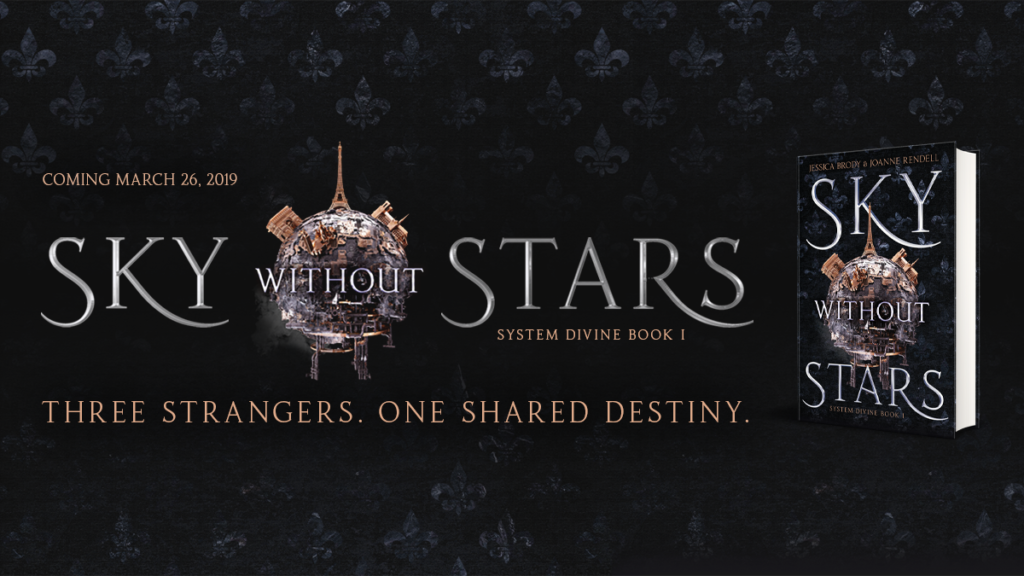
Feature & Exclusive Offer: Solar Systems and Sky Without Stars by Jessica Brody & Joanne Rendell
Those of us living on Earth live in a singular star system, revolving around one solo star (the sun), though there are theories that our system was once binary! In Sky Without Stars, the system is trinary, something I find fascinating as I read through the first 75 pages (JOIN THE READ-A-LONG) and prepare to learn more about the world. Check out a little about solo vs binary vs trinary (and more!) systems below and dive into the world of Sky Without Stars, out March 26th!
Preorder today & claim your free gifts!
(preorder from an indie partner to receive the preorder gifts)
The exclusive Sky Without Stars Gift Pack includes:
- A two-sided 12”x16” poster featuring a limited edition full-color version of the book’s map
- An autographed Sky Without Stars bookplate, signed by both authors
- A Sky Without Stars bookmark
- A Sky Without Stars postcard
Solar Systems & Sky Without Stars
“I could fill an entire book detailing all the things I love about Sky Without Stars, from the epic tech to the immersive world-building, the jaw-dropping twists to the characters that universally stole my heart. This brilliant reinterpretation of a beloved classic is not to be missed!” —Marissa Meyer, New York Times bestselling author of The Lunar Chronicles
In chatting with Jessica and Joanne, I learned they originally set Sky Without Stars in a binary system, only to later switch to a trinary system after speaking with a legit rocket scientist (NASA is so cool!). Seeing this made me curious to understand more (as a non-rocket scientist) so I thought I would share some of what I learned!
Binary Systems: Binary stars are two stars orbiting a common center of mass. The brighter star is officially classified as the primary star, while the dimmer of the two is the secondary (classified as A and B respectively). In cases where the stars are of equal brightness, the designation given by the discoverer is respected.
– Space.com
Trinary Systems: This may result from the stars actually being physically close and gravitationally bound to each other, in which case it is a physical multiple star, or this closeness may be merely apparent, in which case it is an optical multiple star (meaning that the stars may appear to be close to each other when viewed from planet Earth, as they both seem to occupy the same point in the sky, but in reality, one star may be much further away from Earth than the other, which is not readily apparent unless one can view them from a different angle). Physical multiple stars are also commonly called multiple stars or multiple star systems.
– Wikipedia
Here’s the thing – our solar system works because gravity doesn’t rip our planet out of orbit as it would in a close binary system (wide binaries have more instances of planets). Until recently, we weren’t sure planets could exist in a multi-star system, either, but the discovery of eight planets within multi-star systems proved that wrong.
Personally, I prefer planets stay in orbit. Being knocked out of orbit means temperature changes – oceans turning to ice or drying up and so much more. Imagine what that would do! In Sky Without Stars, planet Laterre is newly (relatively) inhabited by the people in the story. The last thing a revolution needs is a natural disaster tossed in.

If keeping solar systems straight is not your forte, you’re in luck – Jessica and Joanne printed these gorgeous maps as part of the preorder gifts! Grab yours now!

Proud to be a Royal Reader supporting Sky Without Stars, in partnership with Royal Digital Studio, Jessica Brody, and Joanne Rendell.















What an amazing preorder incentive! I should make sure to submit my receipt 🙂 thanks for sharing!
This is super fascinating! I wonder if you’ve accidentally predicted a future problem with a natural disaster…? 😉